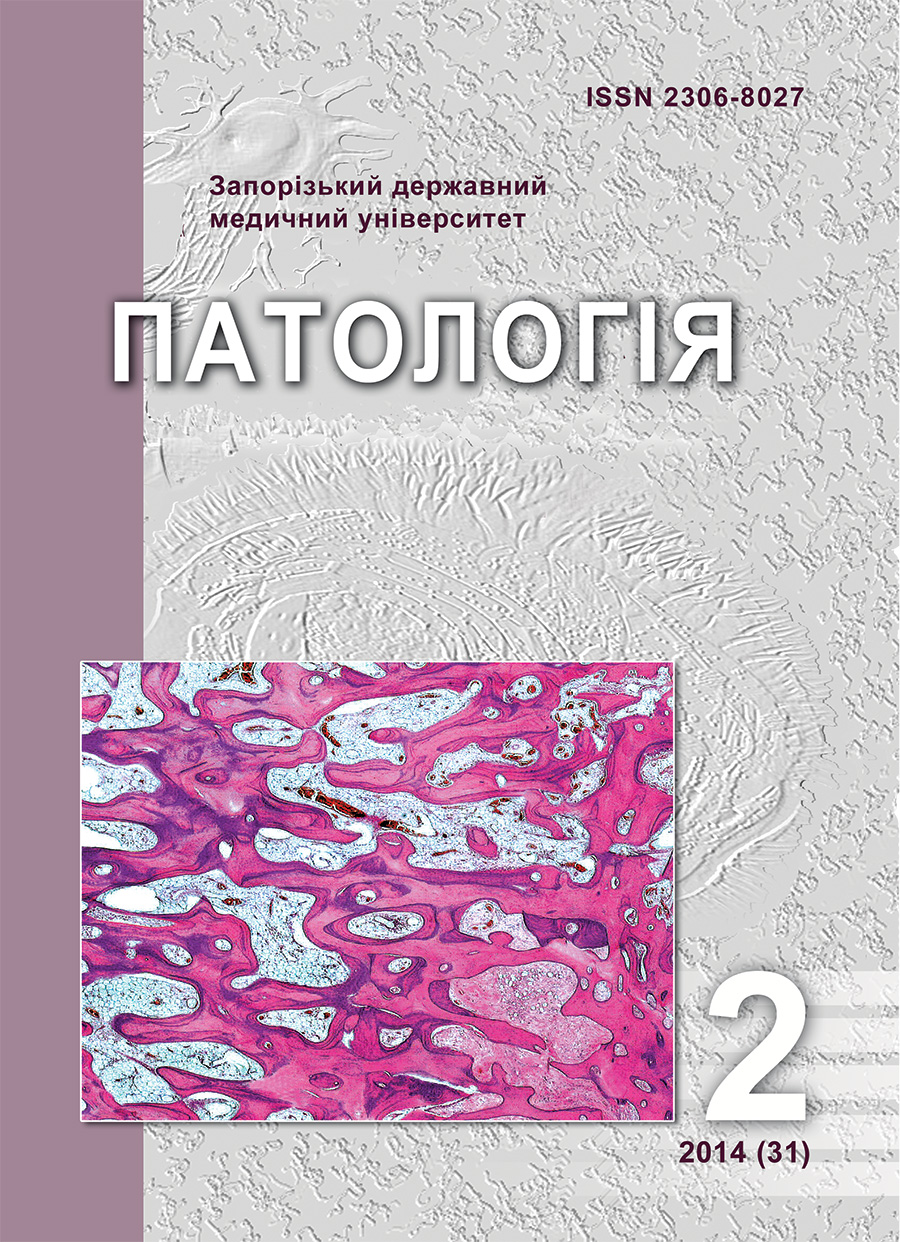Pathological tortuosity of the internal carotid artery: morphological characteristics
DOI:
https://doi.org/10.14739/2310-1237.2014.2.28608Keywords:
Carotid Artery Disease, Cardiovascular Abnormalities, Cerebrovascular Insufficiency, StrokeAbstract
Aim. Pathological tortuosity of the internal carotid artery (PT ICA) is one of the leading causes of extracranial cerebral circulation disorders. Despite considerable progress in methods of diagnosis and increasing number of operations etiology, pathogenesis and morphogenesis of PT ICA remain unclear. In order to study pathological changes in PT ICA material of 26 patients was studied using routine methods of light microscopy and histochemical methods.
Methods and results. It was established that among patients middle aged women predominated. For PT the characteristic type of deformation was coiling (21 cases out of 26); elongation, combined tortuosity and double kinks were met rarely. In pathomorphologic study of carotid arteries hyperplasia of intima with proliferation of smooth muscle cells, irreversible changes in elastic fibers of media with the growth of fibrous connective tissue, dystrophy of collagen fibers and smooth-muscle cells, perivascular sclerosis without cell infiltration in adventitia were revealed.
Conclusion. This indicates expressed fibrogenesis processes in all the layers of the vessel wall providing the irreversibility of circulatory deformation.
References
Kazanchyan, P. O., Popov, V. A., Gaponova, E. N., Rudakova, T. V. (2001) Diagnostika i lechenie patologicheskoj izvitosti sonnykh arterij [Diagnosis and treatment of pathological tortuosity of the carotid arteries] Angiologiya i sosudistaya khirurgiya, 7(2), 91–103. [in Russian].
Togay-Isikay, C., Kim, J., Betterman, K., Andrews, C, Meades, D., Tesh, P., et al. (2005) Carotid artery tortuosity, kinking, coiling: stroke risk factor, marker, or curiosity? Acta Neurologica Belgica, 105(2), 68–72.
Arning, C. (2001) Nonatherosclerotic disease of the cervical arteries: role of ultrasonography for diagnosis. Vasa, (30), 160–167. DOI: 10.1024/0301-1526.30.3.160
Ballotta, E., Thiene, G., Baracchini, C., Ermani, M., Militello, C., Da Giau, G., et al. (2005) Surgical vs medical treatment for isolated internal carotid artery elongation with coiling or kinking in symptomatic patients: A prospective randomized clinical study. Journal of Vascular Surgery, (42), 838–846.
La Barbera, G., La Marca, G., Cappello, F., & Valentino, F. (2006) Anomalies of the extracranial internal carotid artery: anatomo-clinical and histologic study. International Angiology, 28, 573–580.
Pokrovskij, А. V., Beloyarcev, D. F., Timina, I. Е., & Аdyrchaev, Z. А. (2011) Klinicheskie proyavleniya i diagnostika patologicheskoj deformacii vnutrennei sonnoj areterii [Clinical manifestations and diagnosis of pathological deformation of the internal carotid artery]. Angiologiya i sosudistaya khirurgiya, 17(3), 7–18. [in Russian].
Shievink, W. I., Limburg, M., Oorthuys, J. W., Fleury, P., & Pope, F.M. (1990) Cerebrovascular disease in Elors-Danlose type IV. Stroke, (21), 626–632.
Slovut, D. P., & Olin, J. F. (2004) Fibromuscular dysplasia. N Engl J Med, 350, 1862–1871.
Kuzyk, Yu. I. (2006) Fibromyshechnaya displaziya arterii [Arterial fibromuscular dysplasia]. Arkhiv patologii, 68(4), 57–61 [in Russian].
Downloads
How to Cite
Issue
Section
License
Authors who publish with this journal agree to the following terms:- Authors retain copyright and grant the journal right of first publication with the work simultaneously licensed under a Creative Commons Attribution License that allows others to share the work with an acknowledgement of the work's authorship and initial publication in this journal.

- Authors are able to enter into separate, additional contractual arrangements for the non-exclusive distribution of the journal's published version of the work (e.g., post it to an institutional repository or publish it in a book), with an acknowledgement of its initial publication in this journal.
- Authors are permitted and encouraged to post their work online (e.g., in institutional repositories or on their website) prior to and during the submission process, as it can lead to productive exchanges, as well as earlier and greater citation of published work (SeeThe Effect of Open Access).

